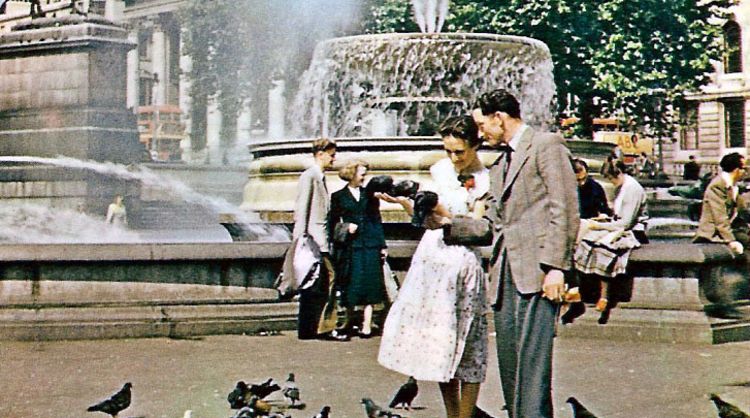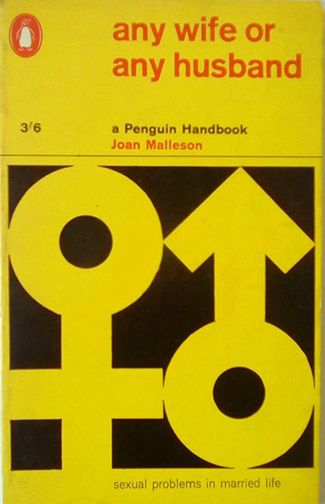Secret recordings reveal the sexual struggles of Fifties Britain
How women tried to overcome sexual difficulties at a pivotal moment in Britain's sex history

“I feel so frigid” | “I feel I am failing him a great deal” |“It didn’t work and I got so upset” |“I need to relax, it is not physical, it is in my mind”.
These are just some of the painful secrets that women confided to the pioneering sexual counsellor, Joan Malleson, in 1950s London. What these patients didn’t know was that Malleson was secretly recording their conversations.
Now, for the first time, a University of Cambridge historian has examined these incredibly rare insights into some of Britain’s earliest sexual counselling sessions.
The study, published today in Twentieth Century British History, investigates how Malleson combined psychological techniques with practical exercises to treat a range of sexual disorders. It also reveals that seeking sexual fulfillment in 1950s Britain could be a deeply confusing and upsetting quest for heterosexual couples.
Dr Caroline Rusterholz listened to the recordings at the Wellcome Library in London. To avoid any ethical issues, they have been anonymised and any personal information that might lead to the identification of individuals has been removed.
“Malleson may have wanted to ensure her patients spoke spontaneously and didn’t want to increase their anxiety,” says Rusterholz. “Ethical guidelines in the 1950s didn’t prohibit recording of this kind. Today, of course, we see things differently and we have a duty to handle this evidence with great care and respect.
“This evidence is crucial to understanding shifting sexual attitudes and major developments in sexual counselling in this period. And as we try to come to terms with twenty-first century sexual pressures, it might help to acknowledge and reflect on what this generation went through in the 1950s.”
Joan Malleson (1899–1956) was a birth control advocate and one of the first female doctors to provide contraceptive and sexual health advice to her patients. In doing so, she realised that the difficulties her patients faced extended to sexual marital relations. In 1938, she became head of the clinic for marital difficulties at the North Kensington Women’s Welfare Centre and started providing sexual counselling. From 1950 she continued her work at University College Hospital’s contraceptive clinic.

Front cover of Joan Malleson's book, Any wife or any husband (1962 edition).
Front cover of Joan Malleson's book, Any wife or any husband (1962 edition).
Malleson recorded 14 sessions without her patients’ knowledge in the early 1950s. The tapes last from six to 30 minutes and record crying, tormented silences and occasionally laughter, as well as patients speaking about their anxieties, fears and disappointments. All of the patients were relatively well-off women and all but one was married. The voices of three husbands, who visited Malleson to support their wives, also feature in the tapes.
'The happy couple' from the Hotpoint Refrigerator cookbook, 1950s. Courtesy of Deluxx under a CC license.
'The happy couple' from the Hotpoint Refrigerator cookbook, 1950s. Courtesy of Deluxx under a CC license.
Patients consulted Malleson for three main complaints: difficulty or inability to have sexual intercourse through penis-vagina penetration due to vaginismus (involuntary contraction of muscles around the opening of the vagina), ‘inhibition of orgasm’ and ‘frigidity’. In four cases, patients were sent by their psychiatrists because of their depressive state, fear of intercourse and feelings of hopelessness.
“Considering how taboo speaking about sexuality remained in the 1950s, all of these women were exceptionally brave to seek help.”
Malleson’s emotion-based therapy linked sexual difficulties with unconscious, repressed feelings rooted in past events. During sessions, she pushed her patients to recall destabilising childhood events and often asked “what was your experience of sexual feeling before your marriage, as a child?”
By answering these questions, patients broke with the kind of emotional restraint that continued to characterise British society. In summing up a case of inhibition of orgasm, Malleson referred to her patient’s difficulties with holding her urine when she was a child which, she concluded “was probably rather mixed up with her sexual sensation.”
Malleson sometimes came across as blunt and judgmental. When a patient admitted that she hadn’t found out how to rub herself as a child, Malleson said: “That was very backward, wasn't it?” But she was mostly encouraging and tried to reassure her patients.
When a newly married woman confirmed that her husband had made her climax by stroking her, Malleson responded: “Ooh! But that isn't so bad! Don't you call that pleasure?”. The women replied “Oh yes, I do, but erm ... well ... hmm ... it’s not really the same thing, it’s not ...”. She meant penetrative sex but Malleson responded: “You can't dismiss that as being less happy. It's still different.”
Malleson would often give patients her own interpretation of emotions. Seeking to explain a husband’s impotence, Malleson said:
“You say he has a weepy mother. Well he probably has had a difficult mother even when he was three and four … when he was sensitive and learning his relationships to women. Do you see? And he may feel guilty, subconsciously, about sexual things and he'll need you to release him of that subconscious guilt. Which means be cheerful, take the lead.”
"Kissing Sweet" advert for Clorets Chlorophyll Gum & Breath Mints, 1953. Courtesy of Classic Film under a CC license.
"Kissing Sweet" advert for Clorets Chlorophyll Gum & Breath Mints, 1953. Courtesy of Classic Film under a CC license.
One of the most striking themes to emerge from the recordings is the immense pressure that patients, and sometimes their husbands, felt to live up to new sexual ideals. Seeking to reassure one woman, Malleson said:
“It’s a difficulty of your generation. Because 20 years ago, 30 years ago, hardly any women knew that anyone could get orgasm. And it wasn't talked about. Now its talked about, everyone thinks it should be a standard measurement and wonders if there's something wrong with them if they're not exactly like someone else they've heard about, you see.”
"That Other You" Lysol Feminine Hygiene advert, 1950. Courtesy of Classic Film under a CC license.
"That Other You" Lysol Feminine Hygiene advert, 1950. Courtesy of Classic Film under a CC license.
Interwar manuals had insisted that mutual sexual pleasure was central to marital stability. This idea gained traction after the Second World War but with a new emphasis on the importance of mutual emotional wellbeing within marriage. While the new sexual norms encouraged female sexual pleasure, they also created new anxieties as couples strove for the perceived ideal of mutually orgasmic penetrative sex.
Rusterholz says: “Malleson sought to break the Freudian idea, spread by manuals, that vaginal orgasm was the only form of sexual pleasure that women should pursue. She tried to identify the source of her patient’s sexual pleasure and help her to make the most of it. She repeatedly explained how important the clitoris was for female sexual pleasure.”
Sessions often identified male sexual behaviour as contributing to a patient’s difficulties. A young bride who didn’t “really feel anything” when she was having sex and was “glad when it’s over” attributed this to the fact that her husband “just seems to be concerned with coming to the climax himself, he doesn’t sort of do anything to me.” Another newlywed patient didn’t want to tell her husband about her lack of enjoyment because “He is very sensitive … I thought it might hurt him.”
But the tapes also show that some men were painfully aware of their partner’s difficulties and keen to improve their sexual lives. The husband of a 38-year-old patient told Malleson: “I realize that we couldn’t possibly stay together … if she couldn’t find a feeling for me, well, I was preventing her from finding a happiness somewhere else, you see.”
Another man asked his wife in bed: “Shall we try twice and see if anything happens?” and, as the patient later told Malleson, “he decided that if he massaged me with his hands something would come, but it still didn’t give me any full satisfaction”. When Malleson responded that one-third of women never experienced a vaginal orgasm, the patient replied “How unfair!”
Malleson suggested practical exercises to her patients, and sometimes their husbands, for easing sexual intercourse. This involved physical examinations, advice on sexual positions and lending dilators to women suffering from vaginismus. In the case of a young married couple where the wife had inhibition of orgasm, Malleson taught the husband about prolonged courtship and ways to arouse his wife sexually through compliments and caresses.
Veto deodorant advert, Good Housekeeping (1957). Courtesy of Clotho98 under a CC license.
Veto deodorant advert, Good Housekeeping (1957). Courtesy of Clotho98 under a CC license.
The tapes suggest that Malleson’s approach met with some success. One young patient who had vaginismus confronted her anxieties and, Malleson noted, “consummated quite unexpectedly and easily and she was very happy indeed.”
But she wasn’t always able to help. A patient who, according to Malleson, “dislikes sexuality, fears men and childbearing” deteriorated and Malleson referred her to a psychiatrist when she lost her appetite and ability to sleep.
Another patient answered Malleson’s questions as if her marriage had been consummated but during a physical examination, Malleson was surprised to find her hymen intact. The patient continued to deny her difficulties and the session ended abruptly with the case in “total confusion”.
In the 1950s, British couples were trying to navigate changing sexual norms while caught between two cultures: rigid emotional restraint versus a new sense of self-awareness and openness. So this period created opportunities but also huge pressure and suffering.
“Malleson was an important part of a movement which helped many couples find sexual and emotional satisfaction,” Rusterholz adds. “She was a pioneer and her legacy lives on – sex therapists still search for the origins of sexual difficulties via talk therapy and they still recommend practical exercises. But I think Malleson’s single biggest contribution was speaking up for the clitoral orgasm.
“Today, lack of sexual pleasure has become a pathological problem to be cured with magic pills. Aggressive pharmaceutical campaigns now target female sexual dysfunctions. This might help some people but perhaps Joan Malleson was ahead of her time when she warned against societal pressure to reach orgasm.”
Trafalgar Square, London, in the 1950s. Courtesy of Leonard Bentley under a CC license.
Trafalgar Square, London, in the 1950s. Courtesy of Leonard Bentley under a CC license.
Reference: Rusterholz, C. ‘You can’t dismiss that as being less happy, you see it is different’. Twentieth Century British History; 16 April; DOI: 10.1093/tcbh/hwz008





